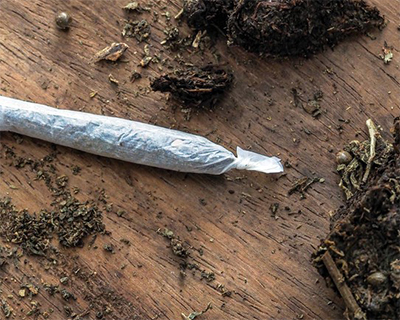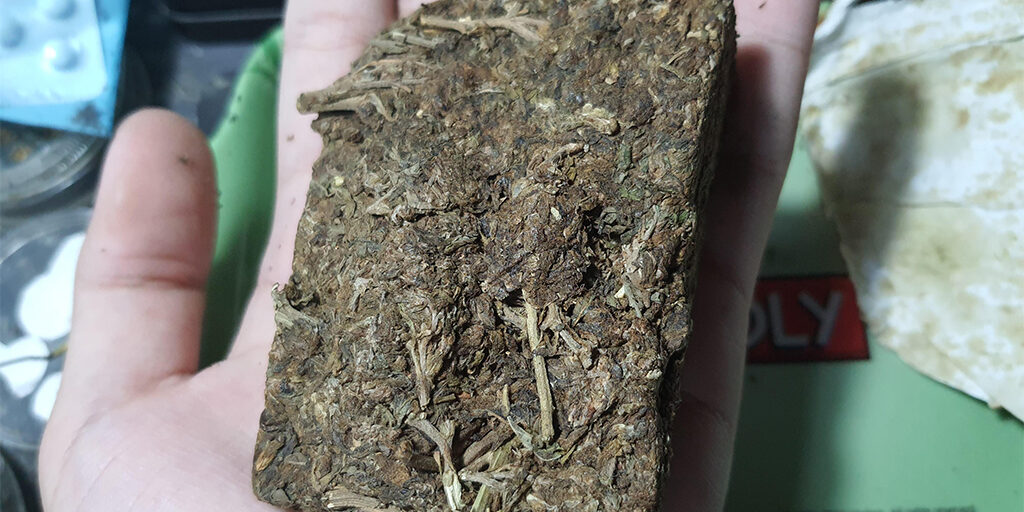“Brick weed” refers to compressed marijuana that was prevalent before the modern era of high-quality, meticulously cultivated cannabis. For many older cannabis users, brick weed is a nostalgic reminder of a time when the cannabis market was less regulated, less varied, and often involved a degree of risk and uncertainty. Below, we look into the history of brick weed, exploring its origins, characteristics, and the cultural context in which it thrived.
Origins and Production
Brick weed gets its name from its appearance: marijuana compressed into dense, brick-like shapes. This method of packaging was primarily used by large-scale producers in countries like Mexico, Colombia, and other Latin American regions. The process of making brick weed involved harvesting large quantities of cannabis, drying it, and then compressing it using hydraulic presses. This compression made the product easier to transport and conceal, which was crucial for smuggling operations.
The production of brick weed was driven by the high demand in the United States and other countries during the late 20th century. During this time, the War on Drugs was intensifying, and law enforcement agencies were cracking down on drug trafficking. Smugglers needed a way to move large quantities of cannabis efficiently and discreetly. Brick weed, with its compact form and low odor, was an ideal solution.
Characteristics and Quality
 One of the most defining features of brick weed was its often questionable quality. The compression process damaged the plant material, leading to a loss of potency and flavor. Additionally, brick weed often contained seeds, stems, and other impurities. The overall cannabinoid content was typically lower than that of today’s high-grade cannabis, resulting in a weaker high.
One of the most defining features of brick weed was its often questionable quality. The compression process damaged the plant material, leading to a loss of potency and flavor. Additionally, brick weed often contained seeds, stems, and other impurities. The overall cannabinoid content was typically lower than that of today’s high-grade cannabis, resulting in a weaker high.
The appearance of brick weed was also distinct. It often had a brownish or dark green color, indicating age and oxidation. The texture was dry and crumbly, making it difficult to roll into joints or blunts. Despite these drawbacks, brick weed was popular because it was affordable and widely available.
The Culture of Brick Weed
The era of brick weed was marked by a countercultural movement that embraced cannabis use as an act of rebellion against societal norms and government regulations. The 1960s and 1970s saw the rise of the hippie movement, which celebrated peace, love, and alternative lifestyles. Cannabis was a symbol of this movement, and brick weed was a staple for many users.
During these decades, cannabis was typically consumed in communal settings. Friends would gather to share a joint or a pipe, often while listening to music or discussing social issues. The communal aspect of cannabis use helped to build a sense of solidarity and shared purpose among users.
In addition to the counterculture, brick weed was also popular among musicians and artists. The relaxing and mind-altering effects of cannabis were believed to enhance creativity and artistic expression. Many iconic musicians of the time, including Bob Dylan, The Beatles, and Jimi Hendrix, openly acknowledged their cannabis use, further cementing its place in popular culture.
Legal and Economic Context
 The illegality of cannabis during the brick weed era played a significant role in shaping the market. Because cannabis was classified as a Schedule I substance under the Controlled Substances Act of 1970, it was considered to have no accepted medical use and a high potential for abuse. This classification led to strict penalties for possession, distribution, and cultivation.
The illegality of cannabis during the brick weed era played a significant role in shaping the market. Because cannabis was classified as a Schedule I substance under the Controlled Substances Act of 1970, it was considered to have no accepted medical use and a high potential for abuse. This classification led to strict penalties for possession, distribution, and cultivation.
Despite these legal challenges, the demand for cannabis continued to grow. Smugglers and dealers found ways to meet this demand, often taking significant risks. The black market for cannabis was a complex network involving growers, traffickers, and street-level dealers. This illicit market was highly profitable, but it also came with dangers, including the risk of arrest and violence.
Economically, brick weed was accessible to a wide range of users due to its low cost. While high-quality cannabis was available, it was often too expensive for many people. Brick weed provided an affordable alternative, allowing more people to enjoy the benefits of cannabis.
The Transition to High-Quality Cannabis
The decline of brick weed began in the late 1990s and early 2000s with the advent of domestic cultivation and the rise of cannabis legalization movements. Advances in horticulture, genetics, and growing techniques led to the production of higher-quality cannabis. Indoor growing operations allowed for better control over the growing environment, resulting in more potent and flavorful strains.
As states began to legalize medical and recreational cannabis, the market shifted towards a preference for quality over quantity. Dispensaries started offering a wide variety of strains, each with unique characteristics and effects. Consumers became more educated about the differences between indica, sativa, and hybrid strains, as well as the significance of cannabinoids like THC and CBD.
The legalization movement also brought about a change in the perception of cannabis. No longer seen solely as a recreational drug, cannabis began to be recognized for its potential medical benefits. Research into the therapeutic uses of cannabis led to the development of products specifically designed to treat conditions such as chronic pain, epilepsy, and anxiety.
Nostalgia for the Brick Weed Era
 For many long-time cannabis users, brick weed represents a simpler time. The shared experiences of smoking brick weed, with its distinct aroma and harsh smoke, evoke memories of youth and rebellion. While modern cannabis offers superior quality and variety, the nostalgia for the old days of brick weed persists.
For many long-time cannabis users, brick weed represents a simpler time. The shared experiences of smoking brick weed, with its distinct aroma and harsh smoke, evoke memories of youth and rebellion. While modern cannabis offers superior quality and variety, the nostalgia for the old days of brick weed persists.
This nostalgia is often reflected in popular culture. Films and television shows set in the 1960s and 1970s frequently depict characters smoking brick weed, using it as a symbol of the era. Songs from the period often reference cannabis use, capturing the spirit of the counterculture movement.
For some, the transition from brick weed to high-quality cannabis mirrors broader societal changes. The move towards legalization and regulation reflects a shift towards mainstream acceptance and commercialization. While these changes have brought many benefits, including safer products and increased access, they also mark the end of an era characterized by its rebellious spirit.
Conclusion
Brick weed played a significant role in the history of cannabis use. Despite its poor quality, it was a staple for many users during the late 20th century. The culture surrounding brick weed was marked by a sense of community and rebellion, reflecting broader societal changes.
As cannabis legalization continues to spread, the days of brick weed are becoming a distant memory. However, the nostalgia for this era remains strong, reminding us of a time when cannabis was more than just a product – it was a symbol of defiance and a catalyst for social change. Today’s cannabis consumers can appreciate the progress that has been made while also remembering the roots of cannabis culture and the role that brick weed played in shaping it.

